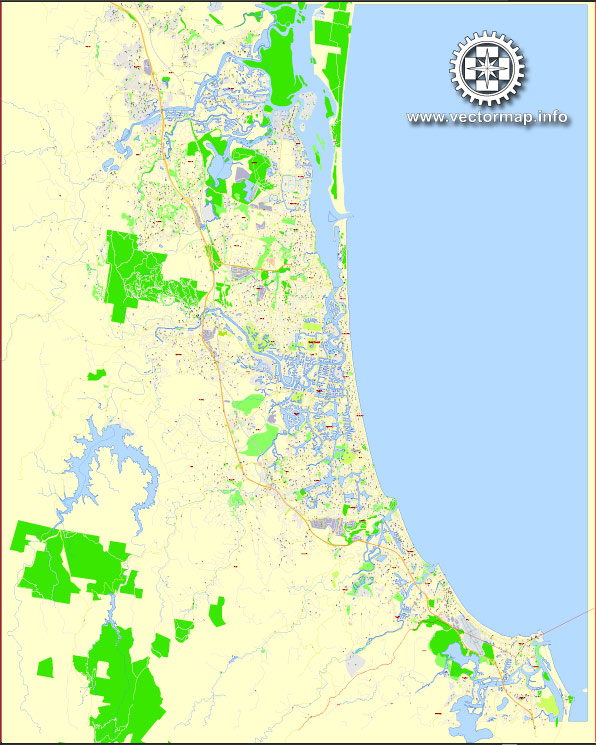The Gold Coast, located in the southeast corner of Queensland, Australia, has undergone significant urban development over the years, evolving from a collection of small beachside communities to a major urban center. Here’s an overview of the history of urban development on the Gold Coast:
- Early Settlement (1800s-1900s): The area that is now the Gold Coast was initially inhabited by Indigenous Australian people, including the Yugambeh and Kombumerri clans. European settlement began in the mid-19th century with timber getters and farmers establishing small communities along the coast. Southport, one of the early settlements, emerged as a port for the region.
- Tourism and Growth (20th Century): The Gold Coast’s transformation began in the early 20th century when tourism started to play a significant role. Surfers Paradise, originally known as Elston, became a popular destination for surfers in the 1920s. The region’s stunning beaches and natural beauty attracted more visitors, leading to the establishment of hotels and infrastructure to support tourism.
- Post-War Boom (1950s-1960s): The post-World War II era saw a surge in population and development. The 1950s and 1960s marked the beginning of high-rise development, with the first skyscraper, the Kinkabool, constructed in Surfers Paradise in 1959. This period laid the foundation for the Gold Coast’s reputation as a modern and vibrant city.
- Infrastructure and Transportation: Improved transportation infrastructure, including the construction of the Pacific Motorway (M1), facilitated easier access to the Gold Coast. The completion of the Gold Coast Highway in the 1970s further enhanced connectivity, supporting the region’s growth.
- Cultural and Recreational Developments: The Gold Coast has actively pursued cultural and recreational developments to complement its tourism industry. The construction of theme parks, such as Dreamworld, Movie World, and Sea World, added to the city’s appeal as a family-friendly destination.
- Residential and Commercial Expansion (Late 20th Century): The latter half of the 20th century witnessed rapid population growth, leading to suburban expansion. Residential areas, shopping centers, and business districts expanded to accommodate the increasing population and economic activities.
- 21st Century Development: The Gold Coast continued to evolve in the 21st century with the hosting of major events like the 2018 Commonwealth Games, which prompted additional infrastructure development. The city has also focused on sustainability and environmental initiatives, embracing a more eco-friendly approach to urban planning.
- Skyscraper Skyline: Surfers Paradise, in particular, is known for its skyline dominated by high-rise buildings, reflecting the city’s modern and cosmopolitan character. The Q1 building, completed in 2005, stands as one of the tallest residential towers in the world.
- Ongoing Urban Renewal: The Gold Coast continues to undergo urban renewal projects, with a focus on creating vibrant, walkable urban spaces. This includes the redevelopment of areas like Southport and the ongoing enhancement of cultural and recreational facilities.
The history of urban development on the Gold Coast reflects its transition from a small coastal region to a dynamic and globally recognized city, driven by tourism, economic activities, and a commitment to sustainable growth.


 Author: Kirill Shrayber, Ph.D.
Author: Kirill Shrayber, Ph.D.